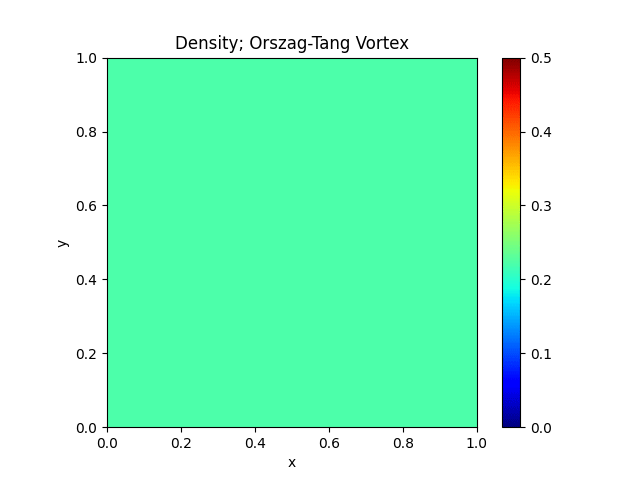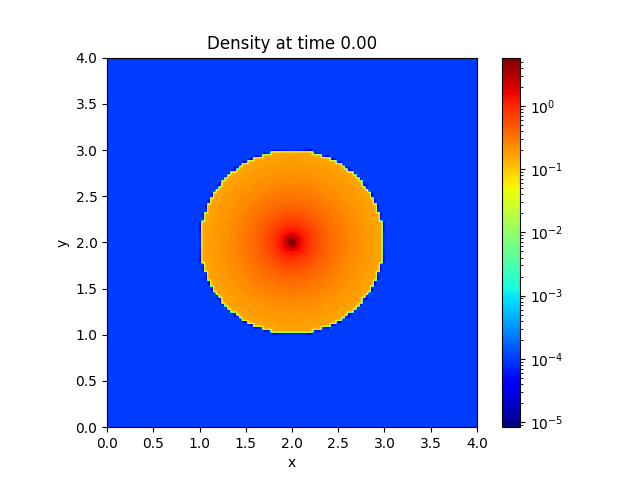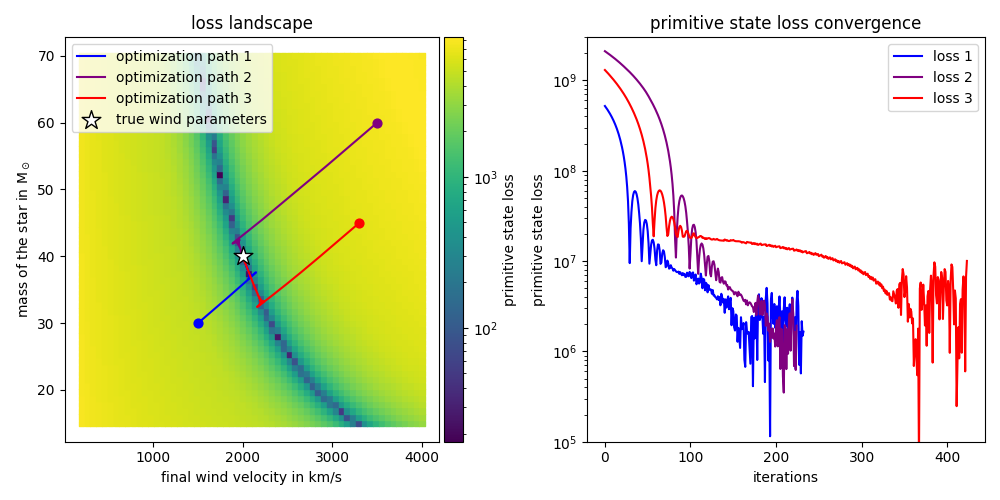Introduction and Installation#
jf1uids differentiable (magneto)hydrodynamics (MHD) for astrophysics written in JAX.
Written in JAX, jf1uids is fully differentiable - a simulation can be differentiated with respect to any input parameter - and just-in-time compiled for fast execution on CPU, GPU, or TPU.
Divergence-free MHD based on Pang and Wu (2024) and conservative radial simulations based on Crittenden and Balachandar (2018).
Physical modules, like one for stellar winds, can be easily added to the simulation. These modules can include parameters (or neural network terms) which can be optimized directly in the solver. Further primitive variables, like those for a cosmic ray fluid, are already implemented or can be added.
See also
The corresponding paper for the previous 1d-only version of this project is available on arXiv.
Installation#
jf1uids can be installed via pip
pip install jf1uids
Note that if JAX is not yet installed, only the CPU version of JAX will be installed
as a dependency. For a GPU-compatible installation of JAX, please refer to the
JAX installation guide.
Tip
Get started with this simple example.
Showcase#
|
|
|---|---|
Orszag-Tang Vortex |
3D Collapse |
Gradients Through Stellar Wind |
|
|---|
Wind Parameter Optimization |
Notebooks for Getting Started#
hydrodynamics
magnetohydrodynamics
self-gravity
Roadmap#
See also
A baseline hydrodynamical code for dynamic adaptive mesh refinement (AMR) in JAX in one dimension, jamr, is available on GitHub.
Implement a conservative 1d radial fluid solver with simple to implement yet powerful numerical schemes.
Implement a simple stellar wind model, first analyses on the gradients of the final fluid state with respect to the wind parameters.
Implementation of higher-order reconstruction methods like WENO-Z+, etc.
Implementation of different Riemann solvers (currently HLL, HLLC, HLLC-LM)
(advection-only) two-fluid cosmic-ray model
cosmic ray diffusion
Implementation of a shock finder
Generalize to 2D and 3D
implement self-gravity
improve self-gravity for energy conservation


